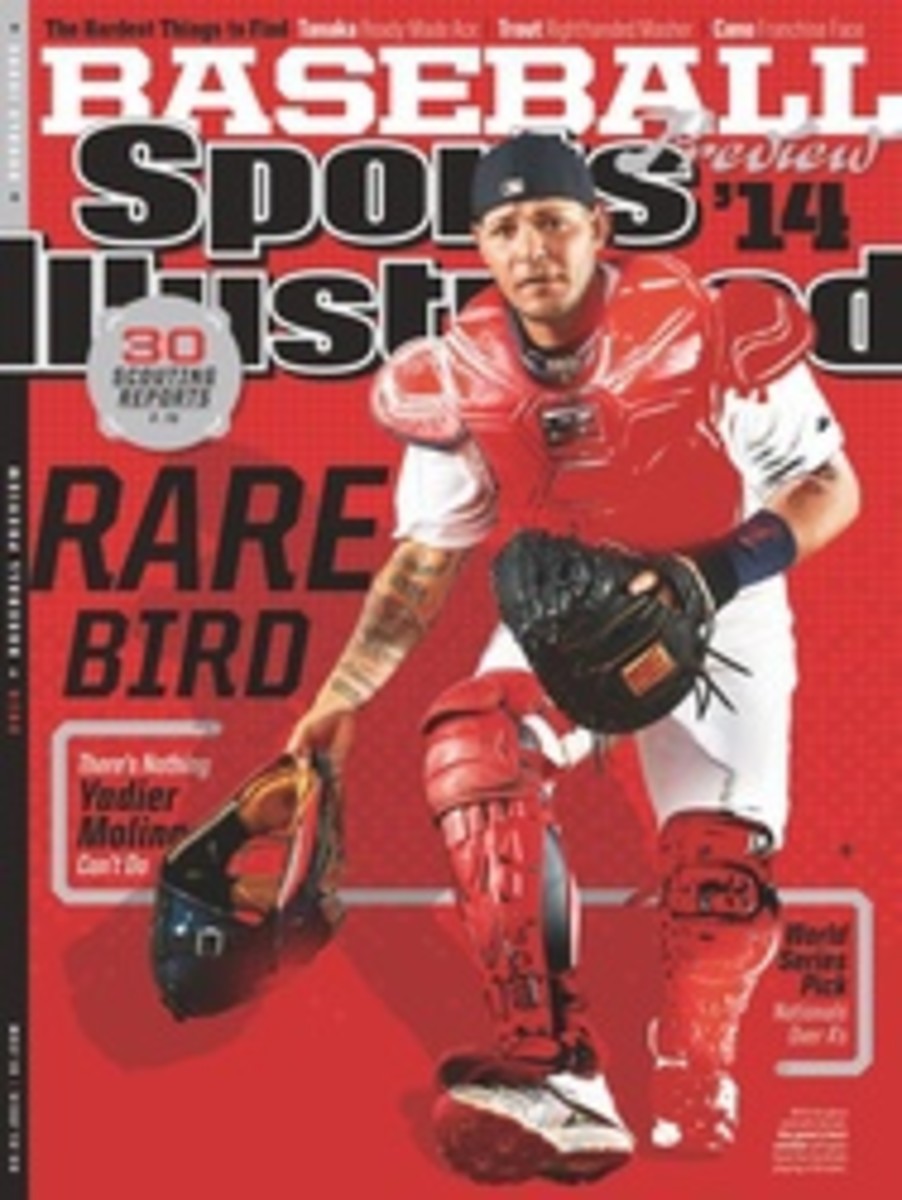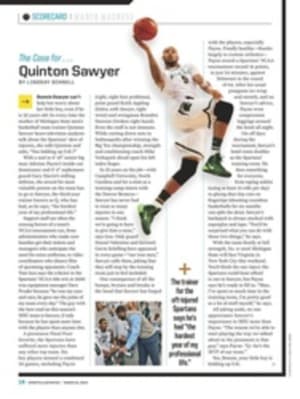
Frame And Fortune
THEY ARE THIEVES and illusionists. They steal strikes with sleight of hand, make home plate umpires see what isn't really there. Their job is simple: "To make a pitch look as good as it possibly can," says Rays catcher Ryan Hanigan, "and, if necessary, to make a pitch appear better than it is."
They are the catchers who excel at framing: the art of receiving a pitch so it's more likely to be called a strike. For decades baseball men have preached their importance, but their contributions weren't in box scores or revealed by WAR. Now, with the emergence of tracking data such as PITCHf/x, analysts and organizations can identify the masters of the craft.
In 2011, Baseball Prospectus presented an innovative analysis that began to determine the value of framing. It found, for example, that over a five-year period Rays catcher Jose Molina saved his teams a major-league-high 73 runs, roughly the equivalent of seven wins. A more recent BP study concluded that on pitch framing alone the best catchers have been worth about two wins above replacement per season. New Mariners second baseman Robinson Cano, the recipient of a $240 million contract, was worth six in '13.
The new numbers show that the Brewers' Jonathan Lucroy is arguably more valuable than the Giants' Buster Posey, the 2012 MVP. They suggest that the Yankees will get a lot more from their new $85 million catcher, Brian McCann, than just his bat. The data also explain why smart organizations such as the Astros are stockpiling their systems with strong receivers. And they reinforce why the Rays made one of the shrewdest moves of the winter when they acquired Hanigan, 33, from the Reds in a three-team trade, then signed him to a three-year, $10.8 million extension. Tampa Bay now has two of the top framers in the game in Molina and Hanigan, who in '12 was rated third in the majors by BP. (He sat out half of '13 with an injured oblique.)
It's estimated that a great framer such as Molina earns up to seven more strikes a game than a poor one such as the Braves' Ryan Doumit. A starting catcher typically receives more than 7,000 pitches in a season. Hundreds, if not thousands, could be called either way. "In the end," says Hanigan, "you just want to make the zone as large as possible."
A BEAUTIFUL VIEW
Big catchers such as the 6'2", 250-pound Molina are less agile, but their size does have advantages. For one thing, the catcher can block the ump's view of the ball so he has to rely on glove position to make a call. "[Molina] does a really good job of using his body back there," says Rays pitcher David Price. "He kind of shields it."
IT'S ALL IN THE WRIST
Each catcher receives the ball differently. Some "ankle sway" (shift from side-to-side behind the plate); others "funnel" (catch the ball in the overhand position and then absorb it toward the stomach); yet others "stick" (move the glove as little as possible). "It comes down to each catcher's body type, his flexibility, the ability of certain guys to get into certain positions," says Hanigan.
SILENCE SPEAKS
Quiet. That's the word to describe a master framer behind the plate. "Real soft, real quiet," says Hanigan. "A soft target is what the pitcher wants. The key is making sure you're beating the ball to the spot, being soft with your hands and not yanking anything around—being smooth and giving the ump a good look."
RHYTHM KINGS
Ideally, the dynamic during a game is like that of a dance. "Good receiving comes from being comfortable with the tempo of the game and the tempo of what your pitcher has," says Hanigan, who must familiarize himself with a new staff in Tampa Bay after seven seasons in Cincinnati. "You have to understand how this guy's ball moves in certain parts of the plate, and the more reps you get, the more you understand how to work it to get calls. You learn the positions you need to get into to make the pitches look the best they can."
POCKET WATCH
A great framer catches the ball in different parts of the glove to persuade an umpire that a pitch is in the zone. If a pitch is outside to a righthanded batter, for example, Molina will make it seem as if the glove is centered by catching the ball in the outer webbing. "I throw a lot of pitches where I can see the ball just sitting, half in and half out," says Rays pitcher David Price, who has a 2.67 career ERA with Molina behind the plate and a 4.05 without, "and the glove is still in the strike zone."
PHOTO ILLUSTRATION
Photograph by SIMON BRUTY SPORTS ILLUSTRATED
Photo Illustration by STEPHEN SKALOCKY
Ryan Hanigan

